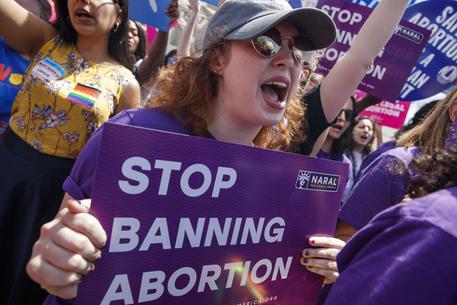The phones at the New York Abortion Access Fund haven’t stopped ringing. But more often than not, it’s not New Yorkers on the other end. Since Roe v. Wade was overturned in 2022, the center of gravity in America’s abortion landscape has shifted—and New York has emerged as a refuge.
Requests from out-of-state patients have surged. “We’re seeing a steady increase,” said Chelsea Williams-Diggs, executive director of NYAAF, in comments to POLITICO Pro. According to the group’s internal data, 38% of those seeking support in 2024 came from outside New York, up from 34% the year prior. Most calls originate from the South—Florida in particular—where abortion laws have tightened sharply in recent years.
But demand is only part of the pressure. The cost of abortion care is climbing, especially for patients pushed into later gestational windows by legal barriers and travel delays. These procedures are more complex, less widely available, and often require long-distance travel to one of the few clinics in New York that offer services beyond 19 weeks.
“It’s a vicious cycle,” Williams-Diggs said. “The farther people have to travel, the more it costs. And the more it costs, the harder it becomes to help everyone.”
NYAAF is now sounding the alarm: its financial model is approaching a breaking point. Donations—once boosted by national outrage after the fall of Roe v. Wade—have dropped off significantly. At the same time, state funding promised under Governor Kathy Hochul’s 2022 Reproductive Freedom and Equity Grant Fund remains out of reach.
In 2023, the New York State Senate earmarked $1 million for abortion access initiatives. But NYAAF has yet to receive any of it. The funds are stuck in administrative limbo as the organization navigates the cumbersome process of securing a state grant.
“We’ve had to take out a $1 million loan just to stay afloat,” said Williams-Diggs. “That’s not sustainable for a nonprofit. We need relief—and soon.”
The group is also pressing the Hochul administration to broaden the scope of public aid. While much of the existing funding supports clinics directly, NYAAF argues that more attention must be paid to “practical support”: costs related to travel, lodging, meals, childcare, and patient accompaniment—essentials for patients crossing state lines with limited means. Without those forms of support, Williams-Diggs warns, abortion access becomes a right “in theory only.”
“You can’t call it a right if it requires a plane ticket, a hotel room, and a week off work just to access it,” she said. “That’s not freedom. That’s privilege.”
The crisis faced by NYAAF is emblematic of a broader national reality: in post-Roe America, geography and income are increasingly determining who gets to make reproductive choices—and who doesn’t.












